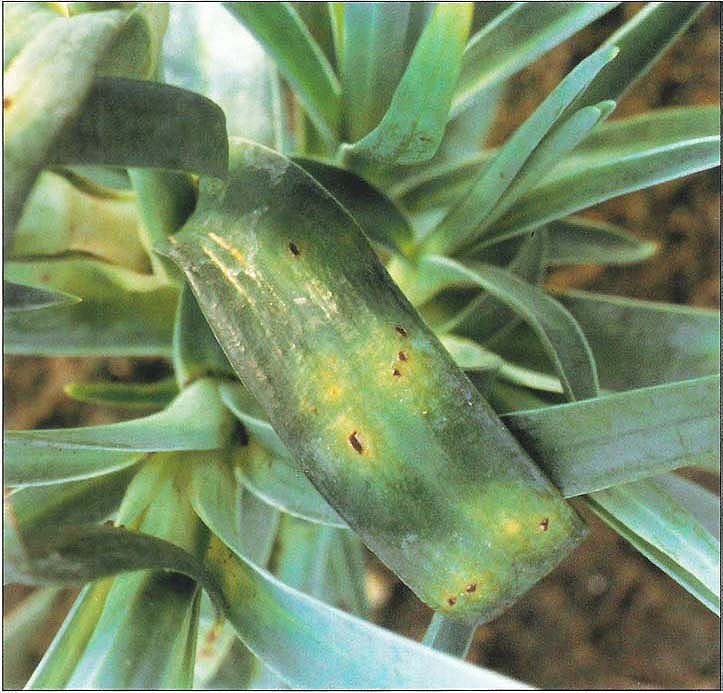All Issues
Tests compare fungicides for control of rust on greenhouse carnations
Publication Information
California Agriculture 45(4):16-17.
Published July 01, 1991
PDF | Citation | Permissions
Abstract
Four fungicides were tested for control of rust on greenhouse carnations. The most effective fungicides were Plantvax and Systhane; the latter is not currently registered for control of this disease in California.
Full text
Rust of carnations, caused by the fungus Uromyces dianthi, occurs commonly on greenhouse-grown carnations in coastal areas of Southern California. The disease occurs throughout the year but is most severe during the cooler, more humid periods of fall through spring when coastal fog is prevalent. The pathogen enters the plant through the stomates and grows between the host cells upon which it feeds.
Masses of the characteristic reddish-brown urediospores are produced within pustules that eventually break through the plant cuticle. These pustules can be found on both the upper and lower leaf surfaces as well as on the stems. The disease causes a loss of aesthetic quality as well as a reduction in plant vigor.
Fungicide trials were conducted on three carnation cultivars in a commercial greenhouse in Encinitas from October 18, 1989 to January 9,1990. Fifteen plots were established within individual rows of each of the cultivars Improved White Sim, Scania and Yellow Candy. Each plot was 3.25 by 10 feet and contained 112 plants.
Five treatments were arranged in a randomized complete block design with three blocks for each cultivar. Treatments were foliar sprays of Plantvax 75W (oxycarboxin), Bayleton 25WP (triadimefon), Triforine EC 18.2% (triforine), Systhane 2E (myclobutanil), and the nontreated control (see table 1 for the rates used). Ortho X-77 Spreader at 4 ounces per 100 gallons of water was used with all fungicides. Sprays were applied to full coverage with a 3-gallon backpack sprayer at a pressure of 44 pounds per square inch. Fungicides were applied six times at 14-day intervals beginning October 18,1989.
Disease was evaluated 1 week prior to and 6 and 12 weeks after the initiation of fungicide spraying. Disease was assessed on the upper 10 nodes of each of 20 stems per plot and was recorded as the number of leaves and internodes with pustules. Disease incidence was calculated for each plot as the percentage of stems with at least one pustule. Disease severity was calculated for each plot as the percentage of leaves and internodes with at least one pustule.
Systhane and Plantvax were the most effective fungicides for control of carnation rust (table 1 and table 2). Systhane, which is not currently registered for use on greenhouse carnations in California, consistently out-performed Plantvax although differences generally were not significant. In the plots treated with Systhane, disease remained relatively constant over the 12-week period, whereas it generally increased in the plots treated with Plantvax.
By the end of 12 weeks, plots treated with Systhane averaged 33.5% less incidence of disease than plots treated with Plantvax, but the severity of disease averaged only 2.3% less. Bayleton and Triforine were not effective for control of rust under the conditions of these tests.







